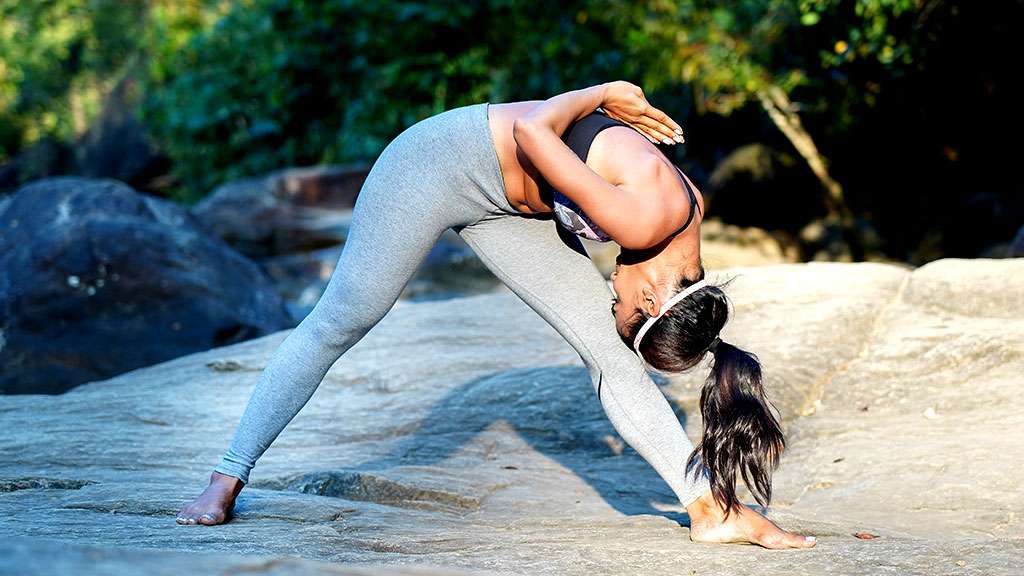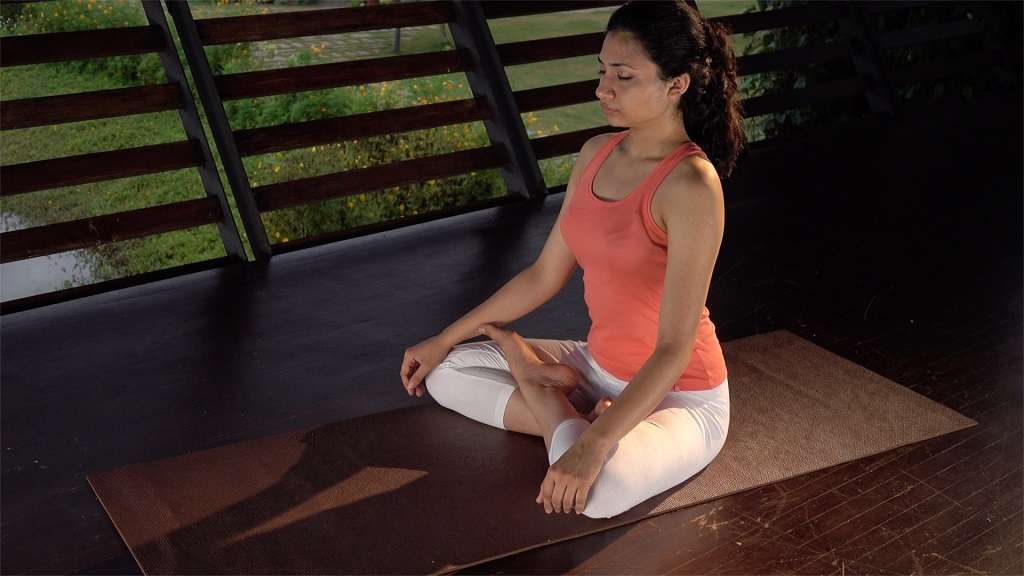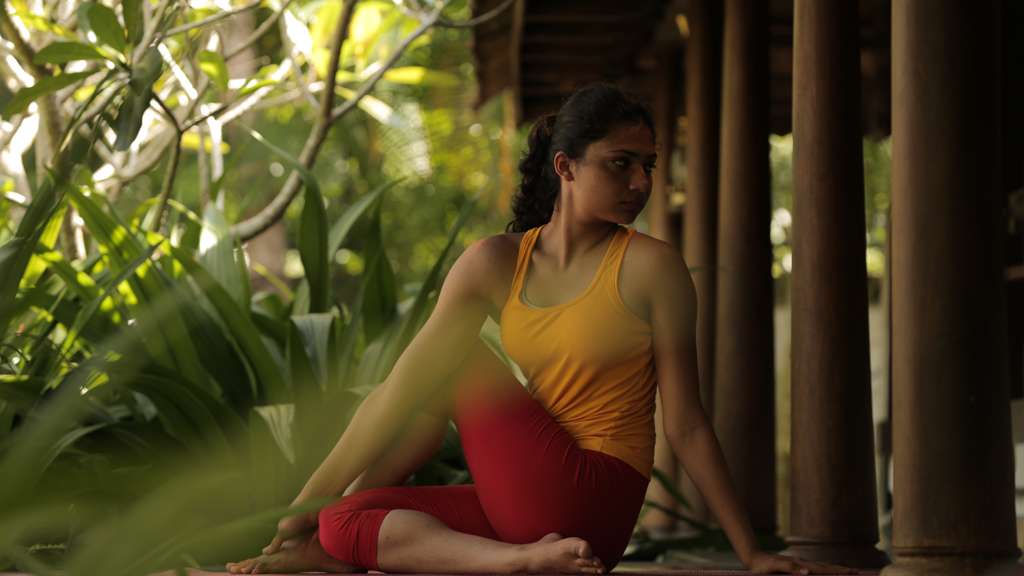


Today, aspects of the yogic discipline that are associated with improving the body are most popular. These aspects include “asanas”, “pranayama” and “pratyahara”. Modern forms of yoga focus on asanas (or body postures) and their physical benefits, including flexibility and strength.
The asana is a posture in which the body is completely at ease. The yogic discipline maintains that true ease of posture is attained only when the mind is focused. On practising asanas, the mind is to be focused on holding the various postures, and hence the body attains a state of comfort.
The calmness of mind required for maintaining an asana can be achieved through pranayama. Pranayama refers to the regulation of breath. Inhalation and exhalation are regulated until one becomes aware of one’s breathing patterns. This practice helps the mind to remain still.
Pratyahara refers to the process of detaching oneself from one’s sensory surroundings. This can only be achieved when the focus of the mind is taken away from the numerous stimuli perceived by the sensory organs. Instead, the attention of the mind is turned inward. This is the meditative process.

The impact of the yogic practice on mental health is also widely recognised. This is another reason why the practice of pranayama and pratyahara have been inculcated by many modern schools of yoga. In the recent times, yoga has gained much popularity in different parts of the world. In many Western countries, yoga is seen as a form of physical exercise. Today, yoga is commonly understood as a secular physical discipline as well. Most yoga centres are mindful of the modern forms of yoga that are popular around the world. These forms lay emphasis on “asanas” or bodily postures, and yoga centres around the world teach them to large numbers of people. These postures are known to strengthen the spine and also render it flexible. While most forms of exercise aim to increase heart rate and activity levels in general, yoga focuses on maintaining equilibrium. Traditionally, in fact, asanas have been described as postures that best relax the body. This quality of relaxation has made the practice accessible to large numbers of people who lead taxing lifestyles. The popularity of yoga as a type of physical exercise has also been bolstered by the use of the discipline to treat physical illnesses. Important description of Asana given by Pathanjali in his Yoga Sutra is "Sthira Sukham Asanam". This means Asana is Steady and Comfortable Posture. Modern schools of yoga is following lighter versions of the Hatha yoga. Hatha yoga lays emphasis on the disciplining of the body and the mind through the practice of asanas and pranayama. Around the world - and in Kerala, where yoga is a widespread practice - centres and practitioners teach Hatha yoga.

An example of the modern schools of yoga is Hatha yoga. Hatha yoga lays emphasis on the disciplining of the body and the mind through the practice of asanas and pranayama. Around the world - and in Kerala, where yoga is a widespread practice - centres and practitioners teach Hatha yoga. Hatha yoga itself was founded by the yogi Matsyendra. Matsyendra was a scholar of Hindu and Buddhist traditions and is credited as the author of the earliest texts surrounding the practice of Hatha yoga. Some scholars even argue that Hatha yoga was first described in Buddhist texts, even before the term “Hatha yoga” was coined.

Traditional forms of Hatha yoga laid some emphasis on the metaphysical concept of energy. One such belief is that of “chakras” - focal points in the human body where energy is concentrated. Another such concept is the “mudra”. Mudras are hand gestures that are supposed to direct the flow of energy. While mudras and chakras might take their origin from multiple faiths such as Buddhism, Hinduism and Jainism, they are now secular practices. In fact, mudras are today incorporated into Hatha yoga to stimulate various parts of the body. With its emphasis on the practice of asanas, Hatha yoga attempts to nurture a sense of balance in the individual. The asanas of Hatha yoga are done in standing, sitting and reclining postures. There are more complex postures as well. Taken together, these asanas focus on instilling balance. The idea of balance is said to have been derived from the word “hatha” itself. “Ha” denotes the sun while “tha” denotes the moon. The coming together of these celestial bodies signifies cosmic balance. Hatha yoga believes that in achieving balance, individuals begin to understand their own beings better. The aim of Hatha yoga is to further the power of the body as an instrument of realisation. The body is no longer seen as the mortal coil that limits the individual’s vision. The impact of the practice of Hatha yoga on mental health is also recognised. This is another reason why the practice of pranayama and pratyahara have been inculcated by many modern schools of yoga including Hatha yoga. In many Western countries, Hatha yoga is seen as a form of physical exercise. Today, yoga is commonly understood as a secular physical discipline. For instance, even practitioners of Hatha yoga don’t focus on the religious or cultural fabric that the discipline was once a part of. Internationally, the modern school of Hatha yoga has been accepted so unequivocally that it is most often just referred to as “yoga”.